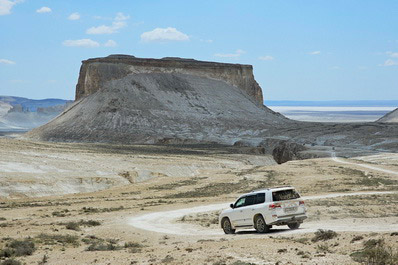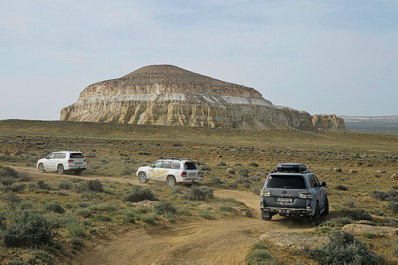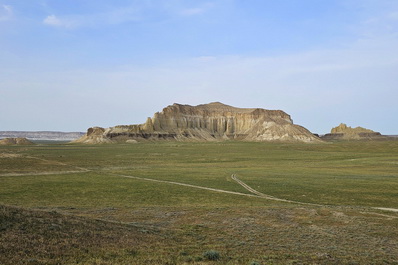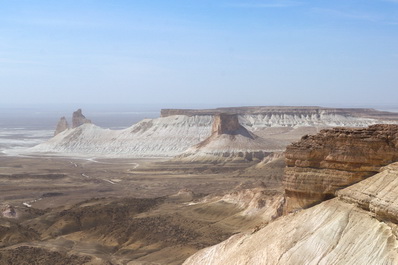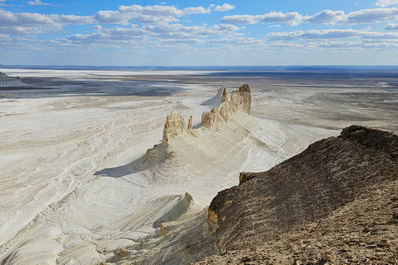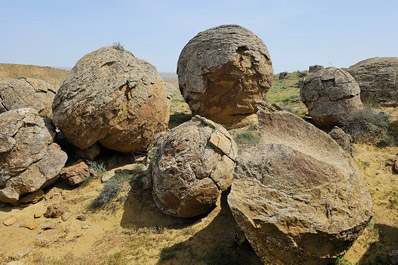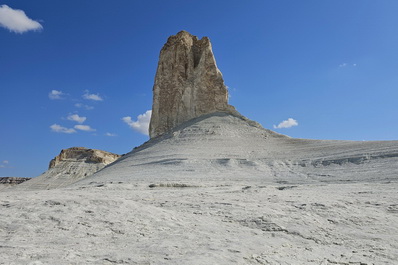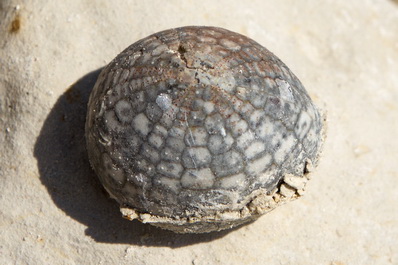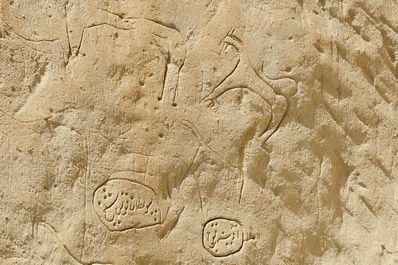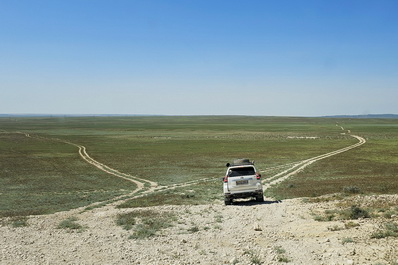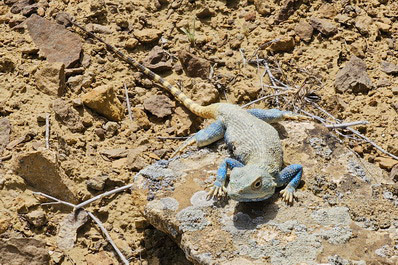Mangystau, Kazakhstan
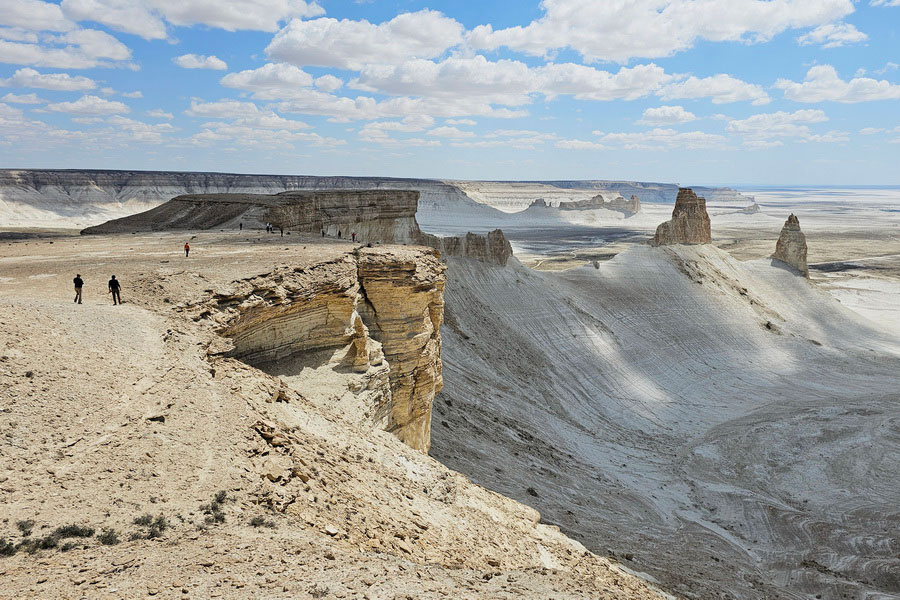
Area: 165 642 km²
Highest point: Mount Otpan, 532 m
Lowest point: Karagye Depression, -132 m
Time zone: UTC+5
International phone code: +7 (7292)
Automobile index: 12
Largest cities: Aktau (274,000 people), Zhanaozen (153,000 people)
Nationalities: Kazakhs, Russians, Azerbaijanis, Karakalpaks, Uzbeks
Mangystau is a fascinating region with otherworldly landscapes, unique geological formations, and mystical underground mosques. Located in southwestern Kazakhstan on the shore of the Caspian Sea, it spans an area of 165,000 square kilometers—comparable to the combined area of Austria and the Czech Republic. The landscapes of Mangystau are often likened to Mars, with white hues prevailing over red.
Our Mangystau travel guide provides information on the most interesting and exciting sights, the region's history, and travel tips. You'll learn the best times to visit Mangystau, how tours work, and what to bring on your trip.
How to Get to Mangystau
The best way to reach Mangystau is by flying into Aktau Airport, the region's only international airport. It has daily flights from Almaty and Astana and weekly flights from Baku, Tbilisi, Istanbul, Moscow, and London. This makes it possible to combine a tour of Mangystau with a trip to the Caucasus, located on the other side of the Caspian Sea.
Traveling to Mangystau by car is also an option, but it is the most remote region of Kazakhstan, requiring a journey of over a thousand kilometers, which will take at least a day. Alternatively, you can take a train and ferry from Azerbaijan, but we do not recommend these methods due to their poor quality and irregularity.
Best Time to Visit Mangystau
The best months to visit Mangystau are April, May, September, and October. During these months, the temperatures are most comfortable, ranging from 20 to 30 degrees Celsius during the day and 10 to 15 degrees at night. In spring, the landscape is lush and green, while in autumn, it takes on a brownish hue, giving it a more alien appearance.
The climate in Mangystau is arid and desert-like, making summer travel challenging with temperatures reaching up to 40 degrees Celsius and dry, hot winds. Additionally, there are no rivers or oases in the region for respite from the heat. Winter travel is also less comfortable, with temperatures dropping to around 0 degrees, strong winds, and occasional snowfall in January.
Attractions of Mangystau
Mangystau is renowned for its geological wonders—massive limestone and chalk cliffs, towering mountains, hundred-meter cliffs and cavities, two-meter high stone balls, and other formations shaped by time, water, and wind.
The Bozzhyra Valley is the most spectacular attraction in Mangystau. Located 270 km from Aktau, it spans an impressive area and features three famous observation platforms with otherworldly landscapes.
Airakty Castle Valley comprises mountain-islands whose walls resemble man-made formations. This natural wonder is situated 180 km from Aktau, near the village of Shetpe, close to Sherkala Mountain.
Sherkala, a solitary mountain, resembles a Kazakh yurt from one side and a sleeping lion from the other. It is one of the most iconic landmarks of Mangystau, located 175 km from Aktau.
Tuzbair Salt Marsh is a vast salt field measuring 15x4 kilometers, lying beneath the white walls of the Ustyurt Plateau. It is one of the best spots for unique photographs. It is 270 km from Aktau, with the last 40 km on a rough dirt road.
In the Torysh Valley, thousands of stone balls, ranging from 1 to 3 meters in diameter, are scattered across a vast hilly plain. It is an excellent place to reenact the myth of Sisyphus. The valley is 110 km north of Aktau.
Besides these well-known attractions, Mangystau is home to many more fascinating sites, such as the porous Ybykty Canyon, the giant land collapse of Zhygylgan Fault, and the layered red and white hills of Kyzylkup. Additionally, there are several unusual historical sites in Mangystau worth visiting, including the underground mosques of Beket-ata, Karaman-ata, and Shakpak-ata. These religious sites exude a special energy and attract pilgrims from all over Kazakhstan each year.
Mangystau Tours
To thoroughly explore Mangystau's popular attractions, you'll need a week, covering at least 1000 km and camping overnight. However, if you skip the most remote sites, the tour can be shortened to 3-4 days. Some locations can be visited on one-day trips from Aktau, allowing you to stay in a hotel rather than camping.
Most of the journey to the sights is on asphalt roads, but reaching the actual sites requires an off-road vehicle. Some areas are just 10 km of dirt road away, while others might require a 100 km drive on rough terrain. We offer reliable Mangystau tours to suit all preferences, from short one-day excursions from Aktau to extended multi-day trips for a full immersion into this fantastic world.
Brief History of Mangystau
The history of Mangystau can be divided into two distinct parts: its prehistoric geological history and its human history.
The natural monuments of Mangystau date back hundreds of millions of years, with their formation linked to the ancient Tethys Ocean. This ocean existed for nearly 1 billion years and finally disappeared due to tectonic activity about 5 million years ago. The sedimentation at the bottom of this ancient sea created the current limestone and chalk formations, which are hundreds of meters thick. These layers contain traces of marine life from the Mesozoic era, including fossilized algae, shells, sea urchin skeletons, and shark teeth. Scientists have also uncovered ichthyosaur remains in the region.
In addition to prehistoric marine life, fossils of land plants have been found in the Kok-kala Tract, along with imprints of ancient horses and saber-toothed tigers on the stone slabs of the Zhygylgan Fault. For paleontologists, Mangystau is a treasure trove, though finding artifacts is challenging due to the vast search area, spanning thousands of square kilometers.
Human history in Mangystau spans 12,000 years, beginning with the earliest known site of primitive people near the Shakpak-ata Mosque. However, due to the scarcity of drinking water, human presence in the region was limited to migratory visits for thousands of years. The area primarily served as a harsh segment of the caravan routes between the Aral and Caspian Seas. Settlements of Kazakh and Turkmen nomads began to appear in the 7th-8th centuries, with notable mosques such as Karaman-ata and Shakpak-ata being built in the 12th-13th centuries.
In the 18th century, the Russian Empire took an interest in Mangystau, establishing its southern outpost, the fortress of St. Peter, on the site where the city of Fort Shevchenko stands today. In the mid-19th century, the renowned Ukrainian poet Taras Shevchenko was exiled to this region. He created drawings of the local landscapes and introduced the world to this extraordinary land. In the 20th century, the discovery of vast uranium and oil deposits spurred industrial and infrastructural development in Mangystau. The city of Aktau was constructed to support the mining industry. In the 21st century, while uranium mining has ceased, Aktau has gained recognition as the oil capital of Kazakhstan.
Safety in Mangystau
Mangystau is a desert region with its most intriguing sites located far from populated areas. While you can easily meet other travelers during the peak tourist season, it's essential to be prepared for any unforeseen circumstances and follow safety precautions when venturing into these wild places.
Your SUV should be fully equipped for off-roading, including having all the necessary tools for field repairs and carrying jerry cans with extra fuel. It's also advisable to travel in a group of several vehicles. Since cellular service may be unavailable far from cities and towns, preload a map of the region into your GPS and bring a satellite phone for emergency communication.
If you're camping overnight, follow these rules:
- avoid setting up camp directly under chalk rocks, which can crumble;
- do not leave food outside;
- keep your shoes inside the tent to prevent encounters with scorpions and spiders, which are rare but present.
Additionally, considering the desert terrain, ensure you have a sufficient supply of water, hygiene products, and sun protection. With proper preparation, your Mangystau tour will be a safe and enjoyable experience, leaving you with only positive memories.

